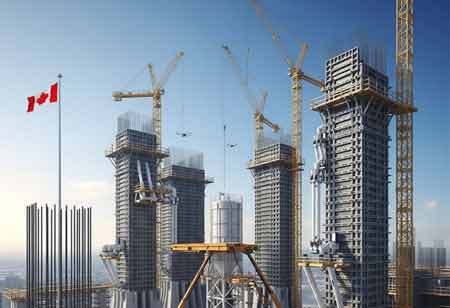Thank you for Subscribing to Construction Business Review Weekly Brief
Specials
- Apartment and Condominium Contractors Canada
- Decking Canada
- Architectural Glass Europe
- MEP APAC
- Construction Saudi Arabia
- German Apartment and Condominium Contractors
- Construction Law APAC
- Outdoor Construction
- Foundation Construction Canada
- MEP Canada
- Kitchen and Bath
- Cold Storage Construction APAC
- Precast Concrete Europe
- Construction Staffing Europe
- Pre-Construction Services
- Flooring System APAC
- Scaffolding Canada
- Swimming Pool Construction Canada
- Construction Management Canada
- Cold Storage Construction Canada
- Flooring Systems Europe
- Residential Construction
- Concrete Canada
- Construction Cladding Europe
- Construction Cladding APAC
- Concretes, Aggregates and Construction Materials APAC
- Concretes, Aggregates and Construction Materials Europe
- Commercial Contractors Europe
- Commercial Contractors APAC
- Dummy
- Construction Insulation, Coating and Waterproofing
- Construction Management APAC
- Landscaping Canada
- Construction Coating Europe
- Construction Tech Startups Europe
- Insulation Services Europe
- Mechanical Contractor Canada
- Mould Remediation and Testing Europe
- Swimming Pool Construction APAC
- Building Sealing Solutions Europe
- Construction Engineering Services
- Mechanical Electrical and Plumbing
- Roofing Systems Europe
- Architectural Glass APAC
- Startups APAC
- Construction Forensic and Owners Representative
- Flooring System
- Waterproofing APAC
- Wall Systems
- Safety and Compliance Europe
- Construction Equipment
- Modular and Prefab Construction
- Architectural Glass
- Construction MENA
- Construction Demolition and Recycling Europe
- Modular Construction Europe
- Construction Interiors
- Steel Building APAC
- HVAC
- Doors and windows
- Modular Construction APAC
- Building Information Modeling APAC
- Sustainable Construction APAC
- Building Restoration and Maintenance
- Commercial Contractors
- Specialty Construction
- Construction Engineering Canada
- Construction Engineering MENA
- Modular Construction Canada
- Construction Demolition Canada
- Roofing and Siding Systems
- Construction Latam
- Construction Staffing
- Roofing Systems APAC
- Construction Consulting
- Steel Building Europe
- Construction Demolition and Recycling APAC
- Safety and Compliance APAC
- Concretes, Aggregates and Construction Materials
- Construction Cladding
Most Common Types Of Waste On A Construction Site
When acquiring materials for a new site, a construction business may slightly overestimate the amount of material required

By
Construction Business Review | Monday, March 22, 2021
Stay ahead of the industry with exclusive feature stories on the top companies, expert insights and the latest news delivered straight to your inbox. Subscribe today.
On a building site, waste production is unavoidable; even a small site can generate massive amounts of rubbish. According to the United States Environmental Protection Agency (EPA), construction and demolition debris generated 600 million tonnes in 2018.
Fremont, CA: When acquiring materials for a new site, a construction business may slightly overestimate the amount of material required, as ordering too many goods is easier to manage than ordering too few. Excess materials become garbage once the building is completed.
Sources of Construction Site Waste
A few different construction processes produce waste as a byproduct, such as the following:
Building Processes
After construction, excess, damaged, or scrap building materials are frequently discarded as garbage. Wood, glass, metal, and concrete, for example, may have come from construction, restoration, or renovation operations. Instead of sending the items to the landfill, the building company may be able to reuse, sell, or recycle them if they are substantially undamaged.
Demolition
Many construction projects necessitate the deconstruction of an existing structure. In this instance, the project's rubble will need to be disposed of somehow. After all, the demolished structure was originally a new construction; therefore, demolition efforts produce many of the same waste materials as new construction projects.
Many demolition waste items are recyclable or even reused, provided they are kept in good condition.





